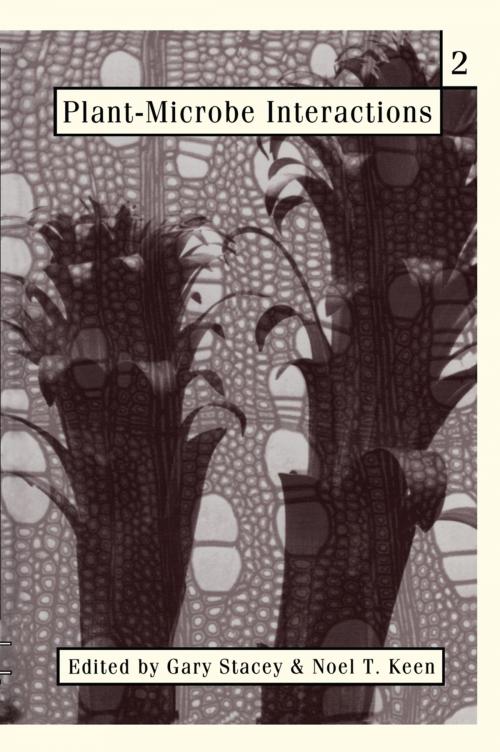Plant-microbe Interactions 2
Volume 2
Nonfiction, Science & Nature, Science, Biological Sciences, Botany, Zoology| Author: | Gary Stacey, Noel T. Keen | ISBN: | 9781461560531 |
| Publisher: | Springer US | Publication: | December 6, 2012 |
| Imprint: | Springer | Language: | English |
| Author: | Gary Stacey, Noel T. Keen |
| ISBN: | 9781461560531 |
| Publisher: | Springer US |
| Publication: | December 6, 2012 |
| Imprint: | Springer |
| Language: | English |
Plant-Microbe Interactions, Volume 2 Volume 1 of this series has made its appearance and dealt forcefully with impor tant current topics in the field of plant-microbe interactions. We believe that the quality of those chapters was high and should serve as a focal point for the state of the art as well as an enduring reference. Volume 2 builds upon these accom plishments. Chapter 1 discusses the fascinating lipo-chitin signal molecules from Rhizo bium, aspects regarding their biosynthesis, and the basis for host specificity. These molecules are a cardinal example of how microorganisms influence plant development and stimulate speculation that they have identified a previously un known aspect of plant hormone activity. Chapter 2 continues the discussion of Rhizobium by considering the trafficking of carbon and nitrogen in nodules. Al though the ostensible advantage of nodules to plants is the fixation of atmos pheric nitrogen, the actual process involved in supplying reduced nitrogen to the plant host is complex.
Plant-Microbe Interactions, Volume 2 Volume 1 of this series has made its appearance and dealt forcefully with impor tant current topics in the field of plant-microbe interactions. We believe that the quality of those chapters was high and should serve as a focal point for the state of the art as well as an enduring reference. Volume 2 builds upon these accom plishments. Chapter 1 discusses the fascinating lipo-chitin signal molecules from Rhizo bium, aspects regarding their biosynthesis, and the basis for host specificity. These molecules are a cardinal example of how microorganisms influence plant development and stimulate speculation that they have identified a previously un known aspect of plant hormone activity. Chapter 2 continues the discussion of Rhizobium by considering the trafficking of carbon and nitrogen in nodules. Al though the ostensible advantage of nodules to plants is the fixation of atmos pheric nitrogen, the actual process involved in supplying reduced nitrogen to the plant host is complex.















